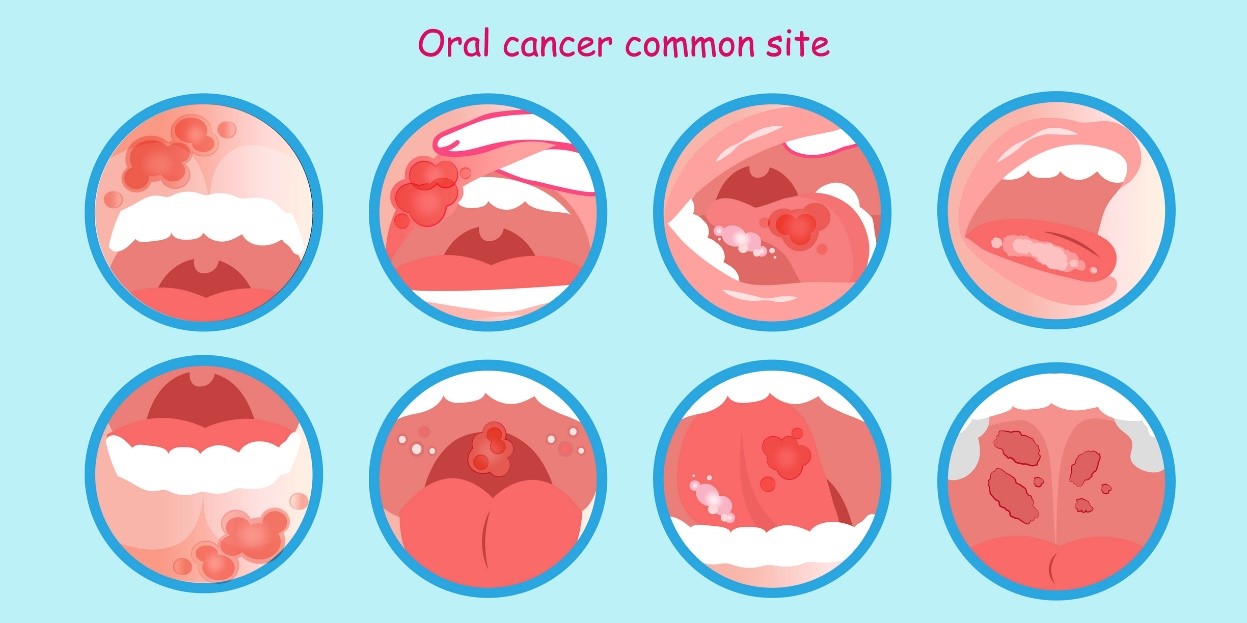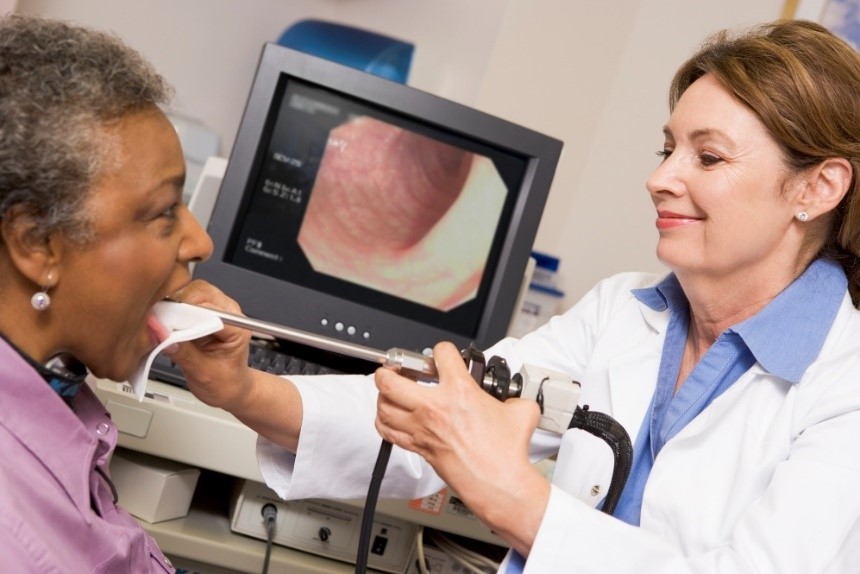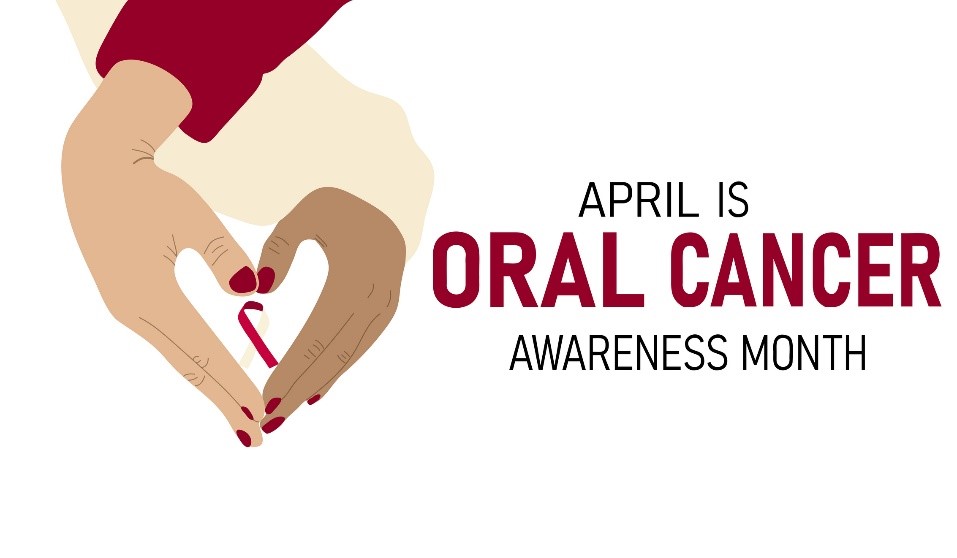- solen.sk - Carcinoma of the oropharynx. Solen. Michal Rosolanka, M.D. et al.
- is.muni.cz - Carcinoma of the oral cavity and oral microbiome. Nikoleta Rosinová. Bachelor thesis. Masaryk University, Faculty of Medicine
- solen.sk - Oral carcinomas - early diagnosis in a general practitioner's office. Solenní katétr. Patrik Štefanička et al.
- medicalnewstoday.com - What you should know about oral cancer. Medical News Today. Yvette Brazier
Oral cancer: what are its causes and manifestations (of the lips and tongue)

Oral cancer is a serious cancer. It has a high mortality rate due to late diagnosis at an advanced stage. What are its first manifestations, prevention and treatment options?
Most common symptoms
- Malaise
- Sore Throat
- Pain when swallowing
- Ear Pain
- Indigestion
- Slow wound healing
- Swallowing disorders
- Scratching in the throat
- Muscle weakness
- Fatigue
Characteristics
Oral cancer is one of the most common cancers of the mucous membranes. The disease mainly affects men between the ages of 50 and 70. The age limit moves lower. The aetiology may have both genetic and external factors.
In this article you will learn the causes, risk factors, symptoms, diagnosis, treatment options and many other interesting information.
Oral cavity in a nutshell
The digestive tract begins in the oral cavity (cavum oris). The oral cavity is especially important in the mechanical processing of food, saliva production, swallowing and breathing.
It is the seat of the taste analyzer and is involved in speech production.
The oral cavity consists of a slit-like vestibule formed by the lips, hard and soft palate with uvula, palatine tonsils, teeth and tongue.
The oral pharynx(oropharynx) is the middle part of the pharynx between the nasopharynx and larynx.
Oropharyngeal carcinomas are the most common malignant tumours of the pharynx. Oropharyngeal carcinomas account for approximately 10% to 20% of cancers in the head and neck region.
Carcinoma of the oral cavity
Most oral malignancies arise from the superficial mucosal epithelium. The most common is squamous cell carcinoma. Others are adenocarcinoma, lymphoma, melanoma or undifferentiated oral carcinoma.
In terms of localisation, carcinomas are divided into carcinomas of the lips, facial mucosa, tongue, floor of the mouth, palate, pharynx and larynx.
Carcinoma of the lips is the most common tumour of the orofacial region.
Men are affected more often in a ratio of approximately 3-4 to 1 compared to women.
The tonsillar part of the palatine tonsils is the most common region of origin in almost half of the cases of oropharyngeal malignancies. Other cases include the soft palate, the root of the tongue, the posterior wall of the pharynx and others.
The majority of oral cavity tumours are not diagnosed professionally until advanced stages of the disease, despite the easily accessible region of origin. Five-year survival can be expected in more than 90% of cases in the early stages and in approximately 30-50% of cases in the advanced stages.
The risk of metastasis to the lymph nodes depends on the exact location and size of the tumour. Tumours located in the midline of the oral cavity can affect the lymph nodes bilaterally.
The main symptoms of oral cancer are pain, scratching, unpleasant smell and bleeding from the oral cavity.

Causes
Endogenous (internal factors) include genetic and hereditary influences, age and sex of the individual.
Extrinsic (external factors) consist of external influences including lifestyle and exposure to the everyday environment.
However, the aetiology of some oral cancers is still unknown.
The influence of HPV infection with human papillomavirus, Epstein-Barr virus, Helicobacter pylori, hepatitis, Candida yeast and other types of pathogens has been investigated.
Interesting information can also be found in the articles:
- about HPV in articles
- Mononucleosis: Epstein-Barr virus EBV as we don't know it?
- Helicobacter pylori as an insidious enemy: How is it transmitted and manifested?
Clinical studies indicate that two thirds of oral cancer cases are caused by smoking and the use of tobacco products (cigarettes, chewing tobacco...).
An external risk factor is alcohol consumption. The combination of tobacco products and alcohol increases the risk of oral cancer very significantly.
More than 80% of oropharyngeal cancers have been shown to be affected by smoking and alcohol.
Other factors cited include inadequate oral hygiene and care, chronic oral inflammation, inappropriate dietary habits and nutritional factors.
Symptoms
As the tumour enlarges, there is bleeding from the mouth, an enlarging mass in the oral cavity, scratching and burning, jaw pain or discomfort when swallowing. Slight enlargement of the jaw, tongue or lump and a foreign body sensation in the throat are also possible.
A common symptom is ear painOtalgia without obvious pathological ear findings requires a detailed examination of the oropharynx.
The presence of white or red specific spots in the oral cavity (palate, tongue, tonsils...) is possible.
The main but late clinical signs include dysphagia and odynophagia - i.e. difficulty swallowing and eating.
In carcinoma of the root of the tongue, there is usually limited mobility of the tongue manifested by impaired pronunciation.
In late stages, reduced and impaired food intake results in loss of appetite, weight loss and cachexia (weight loss due to a disproportion between energy intake and energy expenditure).
Summary of symptoms and manifestations:
- Poorly healing wounds in the oral cavity
- Non-healing ulcers and lumps in the oral cavity
- Loose teeth, tooth loss
- Poor sensitivity of the tongue and lips
- Unpleasant bad breath
- White or red patches in the oral cavity
- Scratching and burning in the oral cavity
- Pain in the throat
- Feeling of a foreign body in the throat
- Difficulty swallowing
- Ear pain
- Problems with pronunciation
- Loss of appetite
- Loss of weight
- General physical weakness and fatigue
Diagnostics
An examination of the oral cavity and oropharynx by sight and palpation (tongue root, tonsillar region, soft palate...) is essential.
By examination, the doctor will find an irregular, bumpy or bleeding to the touch tumour infiltration. The surface of the tumour is often covered with fibrin (protein) coatings that can mimic purulent exudate.
The physician also looks at the mobility, size, and localization of the cervical lymph nodes.
Laryngoscopy is an in-depth examination of the oral cavity, pharynx and larynx by aspiration using a special flexible optical instrument.
As part of the diagnosis, a swab is taken and a sample of the tumour is collected for histological laboratory examination. Microscopic examination of the affected tissue is an important aspect of the diagnosis as it determines the appropriate choice and type of treatment.
The diagnosis after evaluation of the specimen contains precise information on the biological characteristics, location and stage of development and extent of the oral tumour.
The diagnostic imaging methods used include X-ray, CT, MRI, PET or sonography. The cervical nodes, skeleton, jaw and surrounding cavities and soft tissues are mainly examined.
CT scanning is chosen to exclude tumour involvement of the skeleton - jaw and skull. MRI is chosen to evaluate the surrounding soft structures. US is mainly used to evaluate the cervical lymph nodes.
Diagnosis and treatment are guided by the TNM classification - the extent of tumour spread (T), the classification of lymph node involvement (N) and the presence of metastases (M).
Oral cancer is divided into 4 basic stages according to TNM classification and treatment options.

Course
The course of oral cancer is non-specific in the early stages. It may resemble other problems or may not be characterised by any problems at all. More pronounced symptoms do not appear until later. For more information, see Symptoms.
Prevention of oral cancer
Endogenous factors for cancer (age, gender, genetics, family history) are beyond a person's control.
However, elimination of external risk factors and consistent prevention can significantly reduce the development of carcinogenesis.
A healthy lifestyle, a complete and balanced diet with a high protein content and the necessary vitamins is essential. Root and green vegetables, fruit and, last but not least, foods containing fibre are good choices for the prevention of gastrointestinal cancer.
There is a need to raise public awareness of oral cancer. The link with risk factors such as alcohol and tobacco use, poor oral hygiene and chronic inflammation in the oral cavity should be highlighted.
Regular preventive check-ups with a general practitioner and a dentist who examines the oral cavity are important in prevention. Preventive visits to the doctor and dental hygienist can help in early diagnosis.
The role of the dentist and dental hygienist is to diagnose/clean microbial plaque and tartar, which are often the trigger for inflammatory reactions in the oral cavity.
Not only cancer patients, but also healthy individuals should maintain adequate oral hygiene and prevent the development of oral mycobiome.
April is considered Oral, Neck and Head Cancer Awareness and Support for Cancer Patients Month. The organization's message is regular oral health monitoring and care.

How it is treated: Cancer of the oral cavity
Treatment of oral cancer: surgery, radiotherapy and chemotherapy
Show moreOther names
Interesting resources










